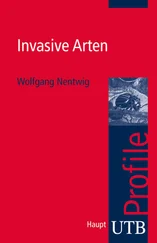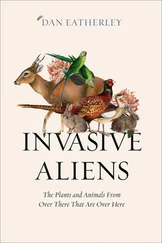A similar niche is exploited by dermestid beetles, many of whose 1,000 species and subspecies are spread by human migrations and globalised trade. Some are specialist scavengers on desiccated animal remains including hides, furs, feathers, tendons and bone, and a few are associated with Egyptian mummies, as well as with human remains from Middle Bronze Age sites in the southern Levant where the larvae drilled tunnels into the bone. Museum taxidermists still use these insects to nibble flesh from animal skeletons prior to display. Some dermestids could have reached Britain as early as the Neolithic period in the same way as the large tabby moth.
Among a number of non-native insect pests arriving in crop shipments is the grain weevil, a flightless species measuring around four millimetres when full-grown. Mated females each produce 150 eggs or more, which are deposited individually into grain kernels. The developing larvae feed there for up to six months before pupation, after which the adults chew their way out of the now-empty seed hulls. There’s a theory that before agriculture came along the grain weevil’s Asian ancestors lived on food scraps in bird or rodents’ nests, before dispensing with wings altogether and becoming wholly dependent on human food stores. If true, this was a good move, as today the weevil plagues food stores worldwide, gorging on wheat, barley, rye, oats, corn, rice and millet, as well as a range of processed goodies from chocolate to pasta. The earliest western European record is from Early Neolithic Germany up to 7,000 years ago, and the insect is confirmed in Britain from the first century CE. Today, the UK alone spends an estimated £6.5 million annually on pesticides to control these and other non-native invertebrate pests of stored grains and fodder crops, including the saw-toothed grain beetle, foreign grain beetle and the red flour beetle, as well as mites and moths.
The unparalleled growth in human population and radical change in lifestyle unleashed by the Neolithic revolution benefited a different class of invading organisms; organisms that made their livelihoods not just among us, but on and even inside us. Harmful bacteria, viruses, protozoa, fungi, intestinal worms, ticks, lice and fleas, and myriad other nasties had always been present in the environment. For example, the bacteria responsible for tuberculosis, which still kills around three million people annually, was probably infecting the very earliest hominids in East Africa millions of years ago. The guts of hunter-gatherers are thought to have been crawling with roundworm, hookworm and other helminth worms, and their wounds quickly got infested with staphylococcal bacteria. In addition, a miscellany of animal-borne diseases may have infected humans before the Neolithic, from sleeping sickness and schistosomiasis to monkey malaria. But as soon as we started to form dense, semi-permanent, settlements, living side by side with livestock, and inadvertently drinking water contaminated by our own waste (never a good idea), harmful parasites and pathogens of all shapes and sizes were allowed to reach epidemic proportions for the first time.
For instance, the measles virus, in order to persist and spread, requires a sedentary population of up to half a million people with a continually replenishing supply of previously uninfected children. Malaria, yellow fever, diphtheria, leprosy, smallpox, influenza and the common cold are among a wide range of other ‘civilisation diseases’ thought to have benefited from our change of habits, many hopping from domesticated animal to human during, or after, the Neolithic. (The species-jumping may have gone both ways, with evidence that humans could have passed on harmful worms as well as certain other parasites and pathogens to their livestock, rather than vice-versa.) Furthermore, as we have seen, agriculture boosted populations of rodents, birds, invertebrates and other agents of disease. Even without close-living humans, grain stores, and herds of livestock, disturbance to the environment wrought by farming itself probably facilitated the spread of parasites and pathogens. For example, the deforested habitat resulting from slash-and-burn agriculture continues to favour malaria-carrying mosquitoes.
Britain’s remote location, temperate conditions and relatively late adoption of modern farming may have helped its people avoid early epidemics. However, disease outbreaks probably became a fact of life by the Bronze Age with the increase in trade with the continent. Indeed, a catastrophic epidemic could explain the extraordinary results of a recent study on ancient human DNA across Europe which indicates that at least 90 per cent of the ancestry of Britons can be traced to the Beaker people. Named for their characteristic bell-shaped pots, this group originated in central and eastern Europe and arrived in Britain some 4,500 years ago, seemingly replacing almost the entire indigenous population. One suggestion is that the pre-Beaker Brits might have succumbed to a disease to which the Beakers were resistant.
Not everything that arrived towards the end of the Bronze Age and into the Iron Age was quite so unwelcome. By around 2,500 years ago, trade routes were beginning to extend to the Far East, courtesy of new imperial roads built by the Persians, facilitating a westward spread of previously unknown plants and animals. During this period, Brits may have got their first taste of a domestic apple, a species originating in the mountains of Central Asia, or ridden their first donkey, derived from wild asses in Egypt.
The woad plant, a member of the cabbage family prized as a source of indigo dye, was another Asian native appearing in Britain around this time. (Extracting the pigment was a complex process, involving huge quantities of leaves, a fair amount of an alkaline substance, such as lime – made by heating up chalk or limestone in a kiln – or stale urine, and a prolonged fermentation phase.) In De Bello Gallico , Julius Caesar’s account of his seven-year campaign in the first century BCE to subdue the Gauls (another name for the Celts), he records that British warriors dyed themselves with woad to terrify their enemies. This was the inspiration for a blue-faced Mel Gibson in Braveheart . Like many of the best stories it has its doubters: the term Caesar used for ‘woad’ was vitrum , which also translates as ‘glass’, prompting some to suggest that Celts were in fact scarring or tattooing themselves. Whatever the truth, pod fragments and seeds of woad have been discovered in the Late Iron Age site of Dragonby, near Scunthorpe in Lincolnshire, and it’s believed the species was brought by Celts, via western and southern Europe.
The Romans may not have had a hand in bringing this particular plant to Britain, but that’s more than can be said for a whole new wave of non-natives about to make their presence felt. Once again, momentous changes were afoot in this corner of northwestern Europe.
3 Contents Cover Title Page Copyright Dedication Epigraph Prologue 1 Ecological Explosions 2 First Invaders 3 Romans and Normans 4 New Worlds, New Invaders 5 The Empire Strikes Back 6 The Plant Hunters 7 Unwanted Hitch-Hikers 8 Fur Farm 9 Freshwater Invaders 10 Underneath the Waves 11 Fighting Fire with Fire 12 The Future Further Reading Index of Species General Index Acknowledgements About the Book About the Author About the Publisher
Romans and Normans Contents Cover Title Page Copyright Dedication Epigraph Prologue 1 Ecological Explosions 2 First Invaders 3 Romans and Normans 4 New Worlds, New Invaders 5 The Empire Strikes Back 6 The Plant Hunters 7 Unwanted Hitch-Hikers 8 Fur Farm 9 Freshwater Invaders 10 Underneath the Waves 11 Fighting Fire with Fire 12 The Future Further Reading Index of Species General Index Acknowledgements About the Book About the Author About the Publisher
Читать дальше











